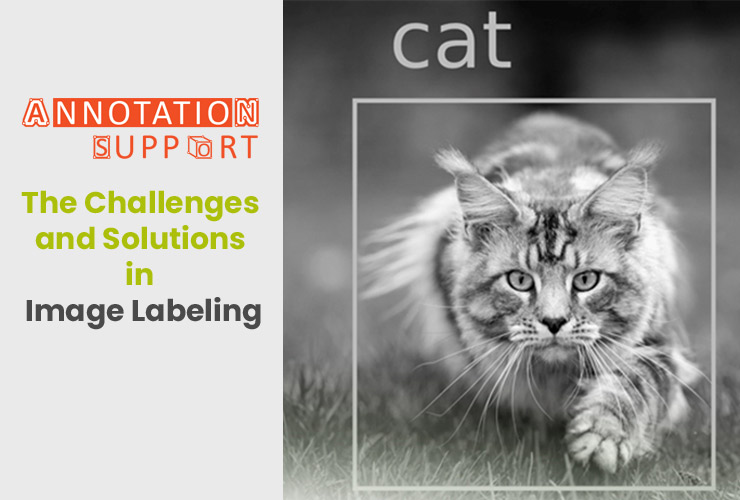Labeling of images is one of the most important elements of training artificial intelligence models when applying them for computer vision purposes. Nevertheless, proper image labeling is not easy as it also has many concerns, and the importance of accurate and uniformly done annotations cannot be argued.

Here are some challenges in image labeling and potential solutions to address them:
Challenges in Image Labeling:
Subjectivity and Ambiguity:
Challenge: Annotations have subjective and ambiguous aspects. These are things that each annotator can understand differently.
Solution: Clearly define annotation techniques and encourage communication among annotators to resolve any confusion. Increase accuracy by involving several annotators and merging their inputs.
Complex Object Boundaries:
Challenge: Annotation of objects with intricate or complex boundaries is difficult and can result in inconsistent results.
Solution: Advanced annotation techniques such as semantic segmentation masks are recommended, and the instructions should be detailed with examples to the annotator. Annotation can be improved by applying quality assurance checks and iterative feedback.
Scale and Variation:
Challenge: Labeling may be inadequate when dealing with datasets of a wide scale or variations. Consequently, this could result in a number of mistakes.
Solution: Try to sample data across different circumstances in order to prioritize it. Data augmentation should be used on increased dataset consistent with real-world conditions. Revise annotation guidelines against new challenges on a monthly basis.
Inter-annotator Variability:
Challenge: Due to this fact, different annotators may end up interpreting one and the same image differently, leading to inconsistencies.
Solution: Calculate inter-annotator agreement metrics for a set of images with multiple annotators. Ensure that there is a feedback process and hold training sessions to enable annotators to be aligned with the labeling guidelines and goals.
Temporal Changes and Evolving Concepts:
Challenge: The way people understand concepts in images or how a new scene calls for changes in labeling guidelines can vary.
Solution: Regularly revise notations instructions on the basis of modifications in the data set or of the area covered by them. It is important to provide ongoing training and communicate channels to keep up with the annotator’s feedback, regarding updates or other changes.
Scalability and Speed:
Challenge: However, since haste can lead to errors in big datasets, it is required that great attention is paid on the accuracy of the results, when working with huge datasets.
Solution: Ensure that you invest on good annotation tools and platforms for speedy labeling. Implement an effective task prioritization and resource allocation process. Put in place quality control standards and periodic auditing for improved reliability.
Resource Constraints:
Challenge: The annotation procedure can be affected by limited resources like money and time.
Solution: Rank annotation according to its effect on the model. Alternatively, you can opt for professional annotation services so as to exploit knowledge and effectively make use of resources.
Class Imbalance:
Challenge: Annotations are distributed unevenly across classes in imbalanced datasets causing under-representation and over-representation of specific classes.
Solution: To address class imbalances, implement strategies including oversampling, under sampling, and generation of synthetic samples. Create new annotation guidelines and make sure all classes get equal focus and attention.
Complex Hierarchies and Relationships:
Challenge: However, such annotations can also be complex as they involve hierarchical relations or relations between objects.
Solution: Outline hierarchy issues in annotation guidelines. Capture intricate interrelationships using highly specialized annotation forms like tree structure or nested annotations.
Quality Assurance and Feedback Loop:
Challenge: Quality assurance process, in addition to constant feedback is important to continuous development.
Solution: Conduct periodic audits, surprise visits, and review sessions. Ask annotators to give feedback for guidelines and tools provided. Iteratively refine annotating through using feedback loop system.
These challenges need a mixture of well-designed annotation guidelines, good communication, robust quality assurance procedures, and advanced annotation methods. Accuracy and consistency of image labeling can be ensured by regular training sessions and working together with annotators to develop reliable annotated sets which will train machine learning systems.
To know more about Annotation support’s data annotation services, please contact us at https://www.annotationsupport.com/contactus.php

